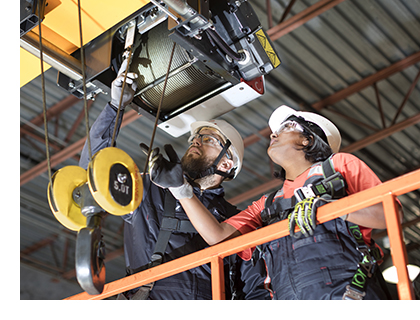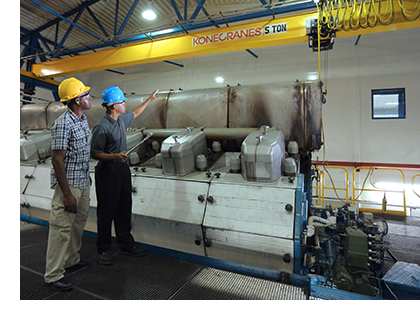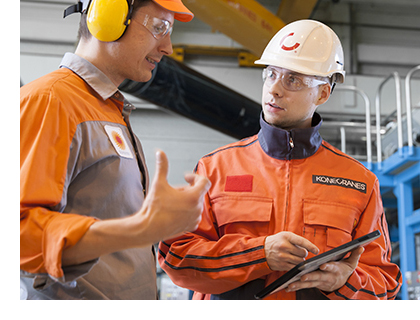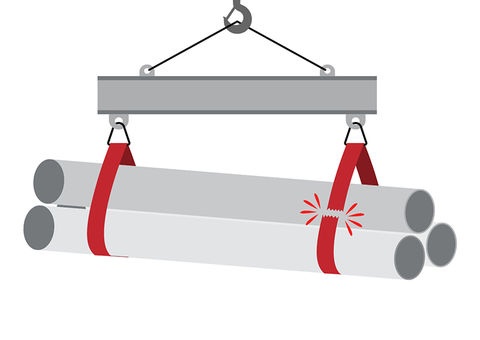Delivering safety improvements with smart technology and a consultative approach
At Konecranes our goal is everyone home safe, every day. We believe there is no job so important and no service so urgent that we cannot take the time to perform our work safely and correctly. We provide a wide range of maintenance services with the objective of improving the safety, productivity and sustainability of our customers' operations.
Prioritizing safety
We engage customers through a consultative, open and transparent approach to deliver measurable improvements in safety, productivity and sustainability.
Whenever we service equipment, we apply our Risk and Recommendation Method to document and prioritize corrective actions. We note failures, deficiencies and/or violations and categorize them as either a safety risk, production risk or an undetermined condition. We also identify improvement opportunities and make recommendations for corrective actions and discuss them with you during the review process.
When we are on site and a safety-related risk is detected, the inspector or technician will carry out a Safety Review with you before leaving the site or returning the equipment to operation. The purpose of the Safety Review is to make you aware of observed safety risks and get a quick decision on next steps.
At the end of a service visit we'll meet with you for a Visit Review, during which the inspector or technician will go over identified risks and improvement opportunities and get a decision on recommended actions. We'll follow up with a Service Review to make sure safety items have been addressed.
Safety is smart and digital
We're using smart technology and features to provide measurable increases in the safety of our customers' operations. Our digital ecosystem—including the yourKONECRANES customer portal—brings transparency and real-time information to support informed decision-making, optimized maintenance and accurate troubleshooting.

 Crane inspections can verify that equipment complies with current standards and laws. Regulations for the care and operation of overhead cranes are designed to keep personnel and operations safe. Not being in compliance with local regulations can increase the chance of accidents, costly fines and disruption of operations.
Crane inspections can verify that equipment complies with current standards and laws. Regulations for the care and operation of overhead cranes are designed to keep personnel and operations safe. Not being in compliance with local regulations can increase the chance of accidents, costly fines and disruption of operations. A regular preventive maintenance program can help you comply with regulations, follow manufacturer’s recommendations for maintenance, and to reduce the likelihood of failures that could result in injuries to personnel.
A regular preventive maintenance program can help you comply with regulations, follow manufacturer’s recommendations for maintenance, and to reduce the likelihood of failures that could result in injuries to personnel. The Konecranes digital ecosystem is powered by the connection of data, machines and people— transforming the delivery of maintenance services and providing you transparency while helping us deliver on our promise to improve the safety, productivity and sustainability of your operations.
The Konecranes digital ecosystem is powered by the connection of data, machines and people— transforming the delivery of maintenance services and providing you transparency while helping us deliver on our promise to improve the safety, productivity and sustainability of your operations.


